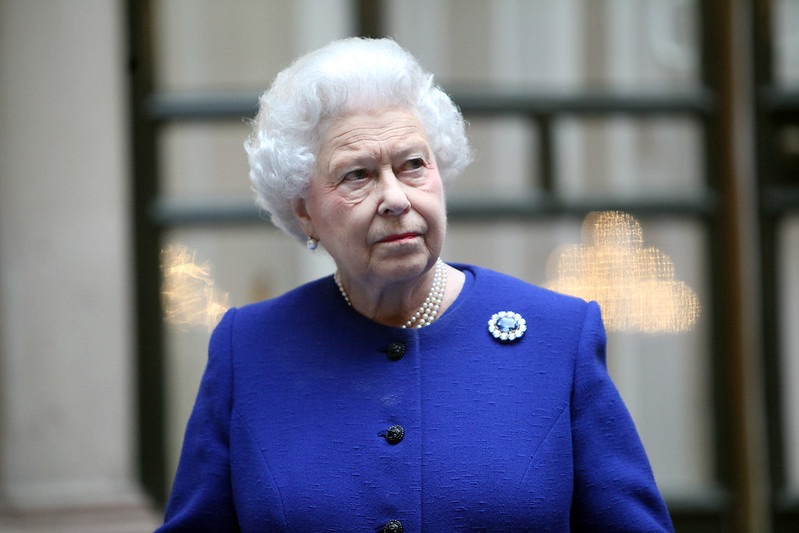Opinion | Wednesday, 14th September 2022
Queen Elizabeth II: A historian’s perspective
Dr Jonathan Spangler discusses the life of The Queen and previous female monarchs

by Dr Jonathan Spangler, Senior Lecturer in History at Manchester Metropolitan University
Elizabeth II has been the head of state in the United Kingdom—and in Canada, Australia, the Bahamas and Tuvalu too—for as long as most anyone can remember.
Opinions vary on the importance or usefulness of the British monarchy in the modern world, but few people would fail to respect a woman who spent nearly every moment of the past seventy years devoted to her role as symbolic head of the nation and the Commonwealth.
As sheer statistics go, Elizabeth II was the second-longest reigning monarch in history—with Louis XIV remaining in first place by two years—and the longest ever reigning female monarch. She was the longest ever in British history, having surpassed Victoria’s milestone some years ago.
But Queen Elizabeth is not just statistics and longevity. Many things written in the press on the sad occasion of her passing will be focused on the woman, the head of state, and her many achievements, including the sheer number of charities of which she has been head in the past seven decades.
From the perspective of a historian of monarchy, however, she is a fascinating and important figure in a different way, the culmination of many generations of monarchs, influenced by their styles and their personalities, and in particular, many generations of female monarchs.
There is a reason that the British monarchy emerged from the Age of Religious Wars united and ready to expand into the New World; a reason that it survived the tumults of the Age of Revolutions and the fall of empires at the ends of the two World Wars. There is a reason the British monarchy survived the transformation from ‘Empire’ to ‘Commonwealth’ in the 1950s and 60s.
Although we must be wary of over-generalising trends in history, the lengthy periods of calm when England and then Great Britain was ruled by a woman brought about political stability that translated into a level of cultural and economic stability many of the rival states in Europe craved, from Elizabeth I to Victoria to Elizabeth II, and including, I would argue, Queen Charlotte of Mecklenburg and Queen Mary of Teck. The longest-reigning female monarch in history is in some ways an embodiment of them all.
Though not a ruling monarch, Charlotte of Mecklenburg, queen consort of George III, was a constant presence in 1790s Britain when her husband was not able to govern. And when France, followed by most of the rest of Europe, was plunged into revolutionary fervour, Britain was mostly unaffected domestically.
From the perspective of a historian of monarchy, however, she is a fascinating and important figure in a different way, the culmination of many generations of monarchs, influenced by their styles and their personalities, and in particular, many generations of female monarchs
Unlike her counterpart Marie-Antoinette, Queen Charlotte was not a fashion plate, nor an especially romantic figure. She had her faults—mostly losing money at cards—but in general, Charlotte’s inoffensiveness was one of her key assets. She did not cause public scandal, and the British public was not sufficiently enraged at the monarchy to call for their wholesale removal.
Extended periods of political stability, when compared to France, Germany, or most other European nations meant that Great Britain entered the 19th century far in advance of any of its competitors—of course, aggressive capitalism and imperialism are very much part of this story too, and should not be whitewashed. Yet from a purely dynastic historical perspective, we once again can suggest that the long reign of Queen Charlotte’s grand-daughter, Queen Victoria, and in particular her near complete withdrawal from politics (completing the slow, steady process of this change in monarchy begun with the Restoration of 1660 and the Revolution of 1688) meant that, by the end of the nineteenth century, the British monarchy was more than a political force, it was now a powerful symbol of unity, British, imperial, global.
Charlotte and Victoria both had many children, and both knew how to employ a public image of familial domesticity to embody a safe, happy, wholesome Britain. When we think of Victoria and Albert, we think of Christmas trees. This was now a middle-class monarchy.
Like many symbols, it was a façade, and when the symbols were challenged in the first half of the 20th century by all kinds of –isms, the European monarchies that had remained dynamic and central to politics, the Hohenzollerns, the Romanovs, and those in Italy, Spain and the Balkans, were toppled. But not the British monarchy, and this distinction was in part due to another queen consort who was, in comparison to many of her continental counterparts, not a glamourous or romantic figure: Queen Mary of Teck.
But throughout these decades, Elizabeth II was a constant, quiet presence, and, many would argue, gave great comfort to many people simply by being there. This constancy was her greatest strength.
The grandmother of the current queen, though technically from a foreign royal house, was born in London, in Kensington Palace, and had been imbued from day one with the Victorian values of Britishness. Some call it the ‘stiff upper lip’, others term it simply boring or even boorish, but the British style of making social change through centuries of tiny steps was seen as tremendously beneficial to the development of democracy and the flourishing of capitalism, in comparison to the upheavals so regularly witnessed in France, Germany, and Italy.
When Wallis Simpson came on the scene in the 1930s, some observers were stunned by her glamour, cosmopolitanism, and chic, particularly the foreign press, but most were not.
Despite what many documentaries on the television tell us, ordinary British people were more impressed by the stiff and steady composure of the Queen Mother, Mary of Teck, and subsequently by the new queen, Elizabeth Bowes-Lyons. ‘Frumpy,’ her critics called her, but, like the tortoise and the hare, frumpiness outlasted glitter, and translated well in the next generation when people of widely varying religious and cultural values looked to the young Elizabeth II to act as a symbol of unity for the birth of the Commonwealth of Nations.
In 1952, Elizabeth II was in place to inspire a new Elizabethan Golden Age, as a new ‘Gloriana’. This vision never really came to fruition, though, as postwar gloom took longer to shake off and was then followed by the 1960s’ social turmoil and 1970s’ economic woes.
But throughout these decades, Elizabeth II was a constant, quiet presence, and, many would argue, gave great comfort to many people simply by being there. This constancy was her greatest strength. She drew on the reputations and character of all her foremothers and acted the part of the mother, then grandmother, figure to all.
Even as the British Empire was dismantled, Elizabeth as a non-threatening, non-political, perhaps maternal figure in the creation of a friendly community of independent nation-states. And she has visited these members of the family many times since the 1950s. It is probably the most important cultural value she aimed to inculcate within her family all these years. Time will tell what remains now she is no longer at the helm.




